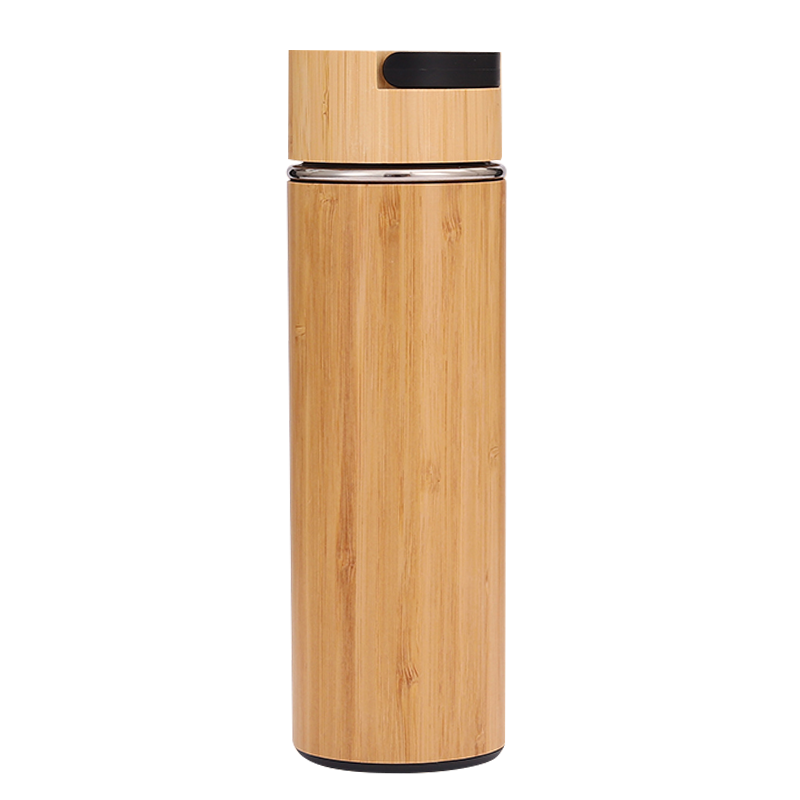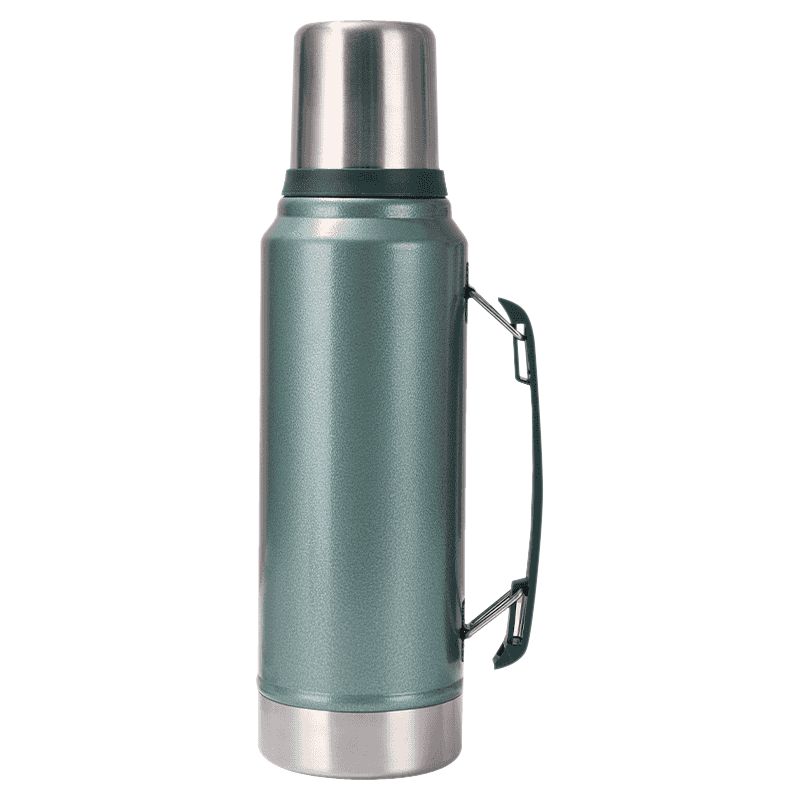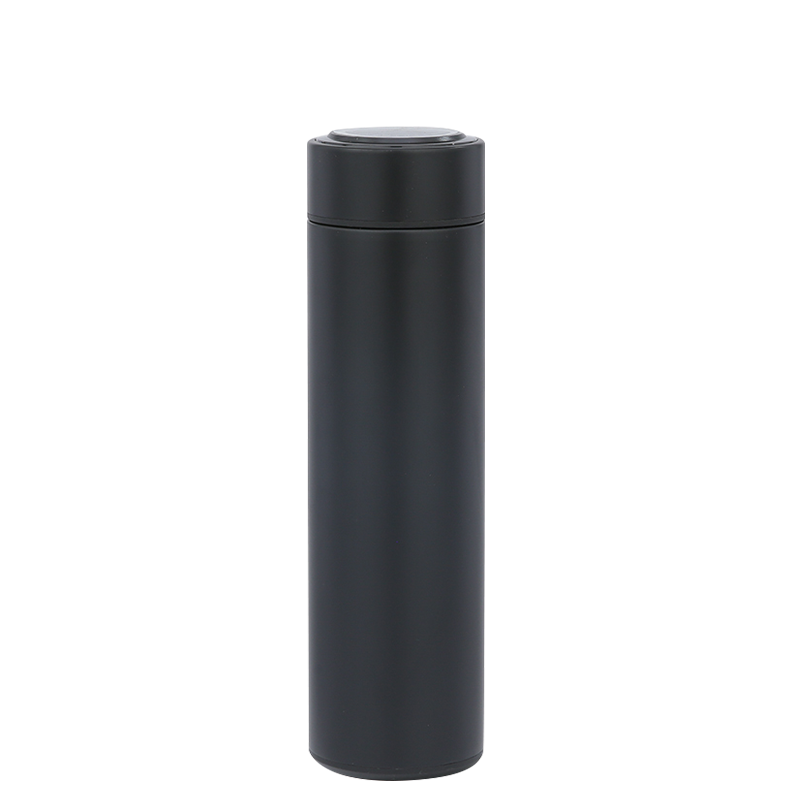
+86-13566758039

Industry News
When shoppers balance style with sustainability, a Bamboo Thermos Flask often appears in the conversation as a product that answers both needs in one design statement: the outer bamboo shell gives a natural look while the inner vacuum insulated core maintains beverage temperature, creating a package that reads like responsible design and practical utility rolled together. The core functionality, however, lies within: a double-walled, vacuum-insulated chamber typically constructed from food-grade stainless steel. In markets where consumers are shifting away from single-use disposables toward refillable solutions, products that pair renewable materials with proven thermal engineering are getting renewed attention and retail consideration.
What Exactly Makes a Bamboo Thermos Flask Stand Out?
Unlike traditional stainless steel thermos, the bamboo thermos shell is made of natural bamboo, which is a renewable resource. This isn't a veneer or plastic imitation; it's the real, sustainably sourced material, providing a warm, tactile, and naturally unique finish. This sophisticated barrier minimizes heat transfer, ensuring your morning coffee arrives piping hot hours later, or your chilled water remains refreshingly cool throughout a warm afternoon. The marriage of these elements – renewable bamboo aesthetics and high-performance thermal engineering – creates a product category that resonates deeply with environmentally aware consumers.
What components make up a bamboo thermos flask and how are they assembled?
Start with a question that isolates parts, then map the workflow of assembly.
A typical bamboo thermos flask combines an outer skin of treated bamboo with an internal double-wall container made of food-grade stainless steel, plus an insulating vacuum between the walls and a lid system that seals for transport.
The process of assembly proceeds in stages:
From a product development perspective, each of these stages is meaningful: the join between bamboo and metal is a design risk, the vacuum integrity is a performance risk, and the lid is a usability risk. Addressing them in design documentation and production checklists is how a product scales from prototype to retail SKU.
How does the vacuum insulation actually keep drinks hot or cold?
This is a frequent question with a technical answer that can be explained in plain terms. There are three main pathways for heat transfer: conduction, convection, and radiation. The vacuum between the inner and outer walls blocks convection because there is no air for currents to form. It also limits conduction because there is nothing to conduct heat between the walls, and some flasks include reflective inner surfaces to reduce radiant heat loss. The result is a container where heat exchanges with the environment occur very slowly, so hot liquids stay warm and cool liquids remain cool for extended periods.

Can I Use My Bamboo Flask for More Than Just Water or Coffee?
Absolutely! The versatility of a bamboo thermos flask is a significant advantage. Its non-reactive stainless steel interior makes it suitable for a wide range of beverages:
What Beverages Should Definitely Stay Out of My Bamboo Flask?
While versatile, protecting the longevity and performance of your bamboo thermos flask requires avoiding certain liquids:
What technical pitfalls should engineers watch for when designing bamboo-wrapped flasks?
Make the question explicit and then list technical checkpoints. Engineers and quality teams need to focus on adhesion, moisture management, and thermal
How should a bamboo thermos flask be cleaned and maintained to preserve both function and appearance?
Proper care plays an important role in prolonging the service life and maintaining the performance of your bamboo thermos flask. With regular maintenance, you can help preserve its functionality and appearance over time:
Cleaning: Hand wash the interior, lid, and any infuser with warm, soapy water and a soft bottle brush after each use. Pay attention to threads and seals. Avoid abrasive scouring pads. Most bamboo exteriors should only be wiped clean with a damp cloth; avoid submerging the entire flask.
Drying: Always air dry the flask completely upside down with the lid off. Trapped moisture requires attention, as it may contribute to the development of odors or mildew, particularly on bamboo surfaces or inside the lid components. Never store it sealed while damp.
Odor Removal: For lingering coffee or tea smells, create a baking soda paste or use a diluted vinegar solution. Fill the flask, let it sit for a while, then rinse thoroughly. Avoid strong bleach.
Bamboo Care: Occasionally treat the bamboo exterior with a food-safe mineral oil to maintain its luster and prevent drying or cracking, especially in very dry climates.
Avoid Impacts: While durable, severe drops can dent the stainless steel interior and break the vacuum seal, rendering the insulation ineffective.
Why Might Temperature Retention Diminish Over Time?
If you find that your bamboo thermos flask is no longer maintaining temperature as effectively as before, a frequent reason could be a compromise in the vacuum insulation. This usually happens due to a significant impact or dent that compromises the seal between the double walls. Unfortunately, vacuum seal failure is generally irreversible. You might also feel the exterior becoming unusually warm or cold during use, a clear sign heat transfer is occurring. Other factors include a damaged or poorly sealing lid (allowing heat exchange through the top) or internal residue buildup affecting the reflective properties. Ensuring the lid is tightly sealed and keeping the interior clean helps maintain peak performance for as long as possible.
Your email address will not be published. Required fields are marked *








* Your email is safe with us, we don't spam.


Our company's products include vacuum flasks, beer mugs, coffee mugs, car tumbler, fire stove and tensile parts, etc.
Phone: +86-13566758039
Tel: +86-0579-87171178
Fax: +86-0579-87171178
E-mail: [email protected]
Add: No.29, Qiaodong Road, Qiaotouzhou Village, Longshan Town, Yongkang, Jinhua, Zhejiang, China.

 English
English 中文简体
中文简体 日本語
日本語 Français
Français Español
Español